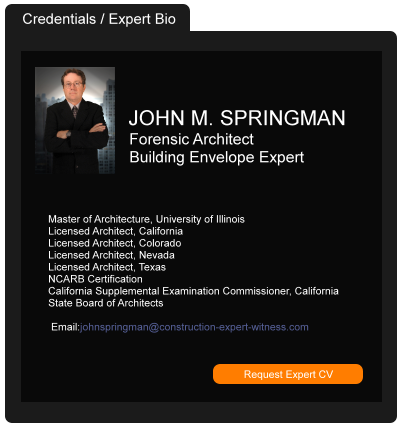Mortgage Whistleblower Stands Alone as U.S. Won’t Join Lawsuit
April 28, 2014 —
Jef Feeley and David McLaughlin – BloombergTwo years after Lynn Szymoniak helped the U.S. recover $95 million from Bank of America Corp. and other lenders for mortgage-fraud tied to the housing bubble, the whistle-blower said the government is ignoring a chance to collect more money for identical claims against other banks.
Szymoniak got $18 million when the U.S. Justice Department intervened in her foreclosure-fraud lawsuit. The government negotiated a settlement with five lenders including Bank of America and JPMorgan Chase & Co. (JPM)
The other banks accused of the same behavior, including Deutsche Bank AG (DBK) and HSBC Holdings Plc (HSBA), are still fighting Szymoniak’s suit, saying she isn’t a true whistle-blower. And the U.S., while continuing its crackdown on banks that packaged risky loans for sale as securities, hasn’t joined with her this time, leaving her to fight the banks alone. U.S. District Judge Joseph Anderson in Columbia, South Carolina, today is set to consider their bid to throw the case out.
Mr. Feeley may be contacted at jfeeley@bloomberg.net; Mr. McLaughlin may be contacted at dmclaughlin9@bloomberg.net
Read the court decisionRead the full story...Reprinted courtesy of
Jef Feeley and David McLaughlin, Bloomberg
Triable Issue of Fact Exists as to Insurer’s Obligation to Provide Coverage Under Occurrence Policy
March 08, 2021 —
Valerie A. Moore & Kathleen E.M. Moriarty – Haight Brown & Bonesteel LLPIn Guastello v. AIG Specialty Ins. Co. (No. G057714. filed 2/19/21 ord. pub. 2/23/21), a California appeals court held that triable issues of material fact exist which precluded summary judgment for an insurer seeking to disclaim coverage on the basis that the “occurrence” pre-dated the policy period where a dispute exists as to the timing of the subject “occurrence.”
In Guastello, a subcontractor built retaining walls from 2003 to 2004 for a housing development in Dana Point, California. In 2010, one of these retaining walls collapsed causing damage to a residential lot owned by Thomas Guastello.
Reprinted courtesy of
Valerie A. Moore, Haight Brown & Bonesteel LLP and
Kathleen E.M. Moriarty, Haight Brown & Bonesteel LLP
Ms. Moore may be contacted at vmoore@hbblaw.com
Ms. Moriarty may be contacted at kemoriarty@hbblaw.com
Read the court decisionRead the full story...Reprinted courtesy of
New Jersey Supreme Court Holding Impacts Allocation of Damages in Cases Involving Successive Tortfeasors
March 28, 2022 —
Thomas Regan & Karley Kamaris - Lewis BrisboisNewark, N.J. (March 21, 2022) - Late in 2021, the Supreme Court of New Jersey addressed the issue of allocating damages in personal injury cases in which the plaintiff asserts claims against successive tortfeasors, such as medical malpractice in the treatment of a slip and fall injury caused by negligence. The decision in Glassman v. Friedel, 249 N.J. 199 (2021) overruled and replaced the long-held principles established in Ciluffo v. Middlesex General Hospital, 146 N.J. Super. 478 (App. Div. 1977) regarding successive liability. Ciluffo held that, when an initial tortfeasor settles before trial, the non-settling defendants in a successive tort were entitled to a pro tanto credit for the settlement amount against any damages assessed against them. The Superior Court of New Jersey Appellate Division in 2020, and the Supreme Court of New Jersey last year, abandoned that framework for one more consistent with statutory contribution law in the Garden State.
In Glassman v. Friedel, 465 N.J. Super. 436 (App. Div. 2020), the Appellate Division held that the application of the principles in Ciluffo in a negligence case has no support in modern jurisprudence, thus limiting its application. It rejected the holding in Ciluffo in light of the state legislature’s enactment of the Comparative Negligence Act, which requires juries to apportion damages between successive events and apportion fault among the parties responsible for each event. The appellate division went on to hold that a non-settling, successive tortfeasor may present proofs at trial as to the negligence of the settling tortfeasor, and that the burden of proof as to the initial tortfeasor’s negligence being the proximate cause of the second causative event indeed lies on the non-settling defendant. In sum, the appellate division in Glassman established steps the jury can use to determine successive tortfeasor liability, but largely treated it as one, attenuated incident.
Reprinted courtesy of
Thomas Regan, Lewis Brisbois and
Karley Kamaris, Lewis Brisbois
Mr. Regan may be contacted at Thomas.Regan@lewisbrisbois.com
Ms. Kamaris may be contacted at Karley.Kamaris@lewisbrisbois.com
Read the court decisionRead the full story...Reprinted courtesy of
U.S. Supreme Court Limits the Powers of the Nation’s Bankruptcy Courts
June 11, 2014 —
Earl Forte – White and Williams LLPOn June 9, 2014, the Supreme Court of the United States issued its much-awaited decision in Executive Benefits Insurance Agency v. Arkison, Chapter 7 Trustee of Estate of Bellingham Insurance Agency, Inc., Case No. 12-1200, in which the court confirmed that the power of the nation’s bankruptcy courts to hear and decide cases involving state-created private rights in which the bankruptcy proof of claim process has not been directly invoked, is severely limited by Article III of the Constitution of the United States.
The decision in Executive Benefits, while providing some clarity to practitioners and the public following the Court’s June 2011 decision in Stern v. Marshall, 131 S. Ct. 2594 (2011), nevertheless will make a substantial portion of bankruptcy litigation matters more cumbersome and potentially more expensive to guide through the bankruptcy system. Clients and practitioners are best advised to hire knowledgeable counsel to help navigate the more complex procedural waters created by this decision.
Although the Court in Executive Benefits did resolve a pending procedural question that had dogged practitioners since Stern was decided in 2011, the Court’s decision in Executive Benefits now makes it abundantly clear that many disputes that were previously heard and decided in the nation’s bankruptcy courts can no longer be decided there and must be submitted to the district courts for full de novo review and entry of a final judgment or order. It is difficult to see how this decision will not make bankruptcy litigation more cumbersome and expensive by adding an additional layer of judicial involvement to many matters, notably to fraudulent transfer and other avoidance “claw back” actions that historically have been decided in the bankruptcy courts and used famously in Madoff and other cases as an efficient device for creating value for creditors.
Read the court decisionRead the full story...Reprinted courtesy of
Earl Forte, White and Williams LLPMr. Forte may be contacted at
fortee@whiteandwilliams.com
Newmeyer Dillion Announces Jessica Garland as Its Newest Partner
January 16, 2024 —
Newmeyer DillionNEWPORT BEACH, CALIF. – January 10, 2024 – Prominent business and real estate law firm Newmeyer Dillion is pleased to announce that Newport Beach attorney Jessica Garland has been elected to partnership.
Garland focuses her practice on employment law and construction law. In her employment practice, Jessica defends companies against numerous types of employment-related claims including claims for discrimination, wrongful termination, harassment, retaliation, unfair competition, wage and hour violations, employee misclassifications, and Cal/OSHA citations.
Garland's practice also includes work in residential and commercial construction. Jessica represents residential developers in complex, multi-party construction defect disputes. In commercial construction, Jessica is focused on defending general contractors in all aspects of construction litigation including delay claims, mechanic's lien claims, defect litigation claims, ADA claims, and construction contract disputes.
About Newmeyer Dillion
For over 35 years, Newmeyer Dillion has delivered creative and outstanding legal solutions and trial results that achieve client objectives in diverse industries. With over 60 attorneys working as a cohesive team to represent clients in all aspects of business, employment, real estate, environmental/land use, privacy & data security and insurance law, Newmeyer Dillion delivers holistic and integrated legal services tailored to propel each client's operations, growth, and profits. Headquartered in Newport Beach, California, with offices in Walnut Creek, California and Las Vegas, Nevada, Newmeyer Dillion attorneys are recognized by The Best Lawyers in America©, and Super Lawyers as top tier and some of the best lawyers in California and Nevada, and have been given Martindale-Hubbell Peer Review's AV Preeminent® highest rating. For additional information, call 949.854.7000 or visit www.newmeyerdillion.com.
Read the court decisionRead the full story...Reprinted courtesy of
Ex-Engineered Products Firm Executive Convicted of Bid Rigging
March 06, 2022 —
James Leggate - Engineering News-RecordA federal jury convicted a former executive at an engineered construction products firm Feb. 1 for his role in a bid-rigging scheme that targeted the North Carolina Dept. of Transportation.
Reprinted courtesy of
James Leggate, Engineering News-Record
Mr. Leggate may be contacted at leggatej@enr.com
Read the full story... Read the court decisionRead the full story...Reprinted courtesy of
Colorado Supreme Court Weighs in on Timeliness of Claims Against Subcontractors in Construction Defect Actions
March 16, 2017 —
Jean Meyer - Colorado Construction LitigationOn February 27, 2017, the Colorado Supreme Court announced its decision in the Goodman v. Heritage Builders, No. 16SA193, 2017 CO 13 (Colo. February 27, 2017) case. In ten short pages, the Colorado Supreme Court completely reshuffled Colorado construction law with respect to application of the statutes of limitation and repose on third-party claims in construction defect cases. Specifically, the Colorado Supreme Court overruled a series of earlier Court of Appeals' decisions that found C.R.S. § 13-80-104(1)(b)(II) (“104(1)(b)(II)”) had no effect on the six-year statute of repose. For context, 104(1)(b)(II) permitted third-party actions for indemnity and contribution to toll until ninety days after the claims in the underlying action were resolved by settlement or judgment. In the construction context, 104(1)(b)(II) was intended to allow a general contractor’s claims against liable subcontractors to toll for the statutorily defined period. This allowed the general contractor to first focus its attention on defending the claims against and thereafter to pursue its claims against the subcontractors.
However, beginning in 2008, in the Thermo Dev., Inc. v. Cent. Masonry Corp., 195 P.3d 1166 (Colo. App. 2008) case, the Colorado Court of Appeals began chipping away at the force of 104(1)(b)(II). This trend continued in the Shaw Constr., LLC v. United Builder Servs., Inc., 2012 COA 24, 296 P.3d 145 decision, the Sierra Pac. Indus., v. Bradbury, 2016 COA 132, _ P.3d_ decision, and culminating in the Sopris Lodging, LLC v. Schofield Excavation, Inc., 2016 COA 158, reh'g denied (Nov. 23, 2016) decision. Effectively, in these decisions, the Colorado Court of Appeals determined that third-party claims could not be brought beyond Colorado’s six-year statute of repose, regardless if they were brought within the ninety day tolling provision set forth in 104(1)(b)(II).
Read the court decisionRead the full story...Reprinted courtesy of
Jean Meyer, Higgins, Hopkins, McLain & Roswell, LLCMr. Meyer may be contacted at
meyer@hhmrlaw.com
America’s Infrastructure Gets a D+
March 16, 2017 —
Garret Murai – California Construction Law BlogThe American Society of Civil Engineers (ASCE) has issued their 2017 Infrastructure Report Card, which assigns a letter grade to the nation’s infrastructure.
Our country’s grade in 2017? A disappointing D+.
Although, if you’re a glass half full kind of person (bless your soul) at least our grade didn’t fall since the last report card was issued in 2013, when our grade was a D+ as well.
In short, we suck. Although, apparently, we don’t suck evenly across the board.
ASCE has divided its cumulative GPA into grades for specific courses, if you will. Our transit systems received a grade of D-; our airports, dams, drinking water and waste water plants, inland waterways, levees and roads received a grade of D; our power plants, hazardous waste plants, public parks and schools received a grade of D+; our bridges, ports and solid waste plants a grade of C+, and our rail systems received a grade of B.
Read the court decisionRead the full story...Reprinted courtesy of
Garret Murai, Wendel Rosen Black & Dean LLPMr. Murai may be contacted at
gmurai@wendel.com


































































